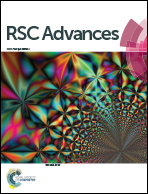Improving CO2 permeability of ceramic hollow fibre-supported composite membranes by blending an ionic liquid in the Pebax/PEGDME selective layer
Abstract
To improve the permeation performance of a ceramic hollow fiber-supported poly (amide-b-ethylene oxide) (Pebax)/polyethylene glycol dimethylether (PEGDME) composite membrane during CO2 separation from biohydrogen, a room temperature ionic liquid (RTIL), namely, [P66614][2-Op], with a high CO2 capacity, was adopted to blend in the selective layer. An RTIL-blended selective layer without defects was prepared on the surface of the ceramic hollow fibre. The physicochemical properties and CO2/H2 separation performance of the Pebax/PEGDME/RTIL composite membrane were then compared with those of the Pebax/PEGDME composite membrane. Intermolecular hydrogen bonds were produced after blending RTIL with the Pebax/PEGDME selective layer, and the surface roughness of the composite membrane increased. The CO2 permeation rate increased by ∼35% and reached up to ∼75 GPU at 50 °C, and the CO2/H2 selectivity was maintained at a high value of ∼15 at 30 °C. Blending RTIL with the selective layer inhibited the positive effect of CO2-induced plasticisation on H2 permeability. However, this process improved CO2/H2 selectivity in mixed gases relative to the ideal selectivity by enhancing competitive sorption among gas molecules.


 Please wait while we load your content...
Please wait while we load your content...